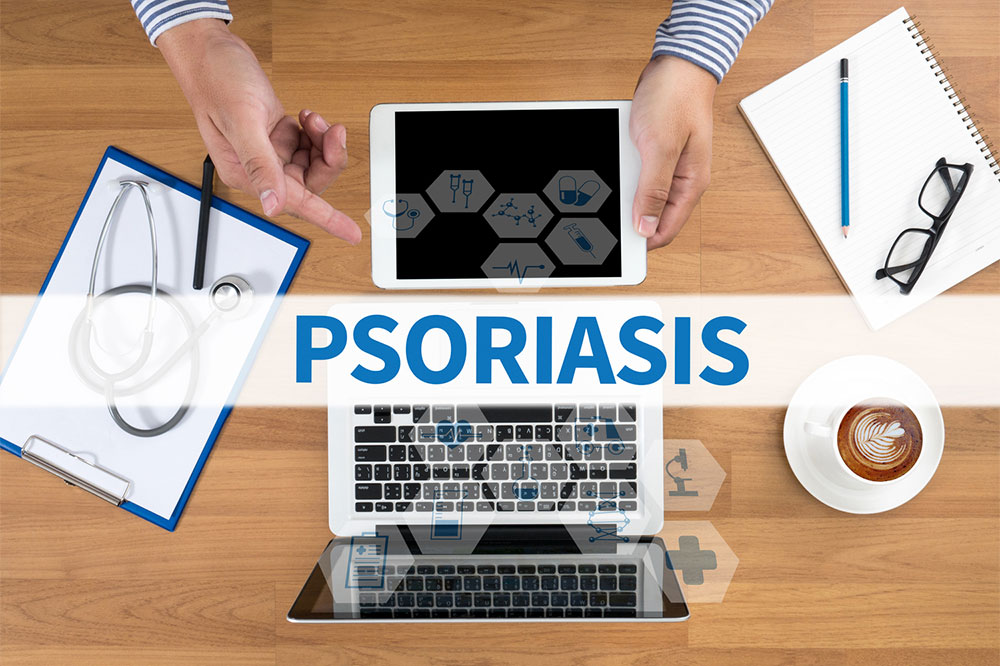Psoriasis – Its Types and Symptoms
Psoriasis is a chronic skin disorder that affects people of all ages. It causes red, scaly patches that often manifest on elbows, knees, scalp, and lower back. These patches occur due to a rapid buildup of skin cells, forming thick scales that may cause an itching or burning sensation. Around 8 million people nationwide live with psoriasis.
Types of psoriasis
Plaque psoriasis
This type of psoriasis is the most common and affects about 80-90% of people suffering from psoriasis. It can appear on the scalp, knees, elbows, and torso. Plaque psoriasis is also often accompanied by nail psoriasis. This condition is caused by genetics or skin injury, sunburn, stress, or infection.
Some of its associated symptoms include:
Raised and inflamed rashes
These may vary from person to person and may appear as small spots like dandruff on the scalp or major eruptions on the skin. These may flare up for weeks or a month and subside eventually.
Itchy skin and red patches
The color of the patches may vary from person to person, and it could range from dark brown and purple patches to pink, red, or whitish scaly skin.
Painful patches
The skin tends to dry out to an extent where it cracks and bleeds out. Itching, burning, or soreness are common sensations felt with this condition.
Guttate psoriasis
The cause of this type of psoriasis may include genetics or bacterial infections. It could affect a child or a young adult, but this type doesn’t leave any scars. It is characterized by teardrop-shaped scars that are small in size and may appear on legs, arms, stomach, and chest. One may experience a flare-up in winters, and its symptoms should subside or be minimal during summers. There are three stages of guttate psoriasis: mild, moderate, and severe, which differs in the number of lesions that covers the body.
Some of the symptoms of guttate psoriasis include:
Red patches
Lesions that look like teardrops may commonly appear on the torso, legs, and arms.
Dry, flaky skin
Scales of dry skin flake off the red patches.
Itching
The affected area may usually be inflamed, irritated, and itchy.
Pustular psoriasis
As the name suggests, this type of psoriasis is associated with red patches that are filled with pus in or near those patches. Common causes of psoriasis may be genes, skin treatment, topical cream, harsh skin care products, exposure to sunlight, infection, or hormones.
Some of the symptoms of pustular psoriasis include:
Blisters
Pus-filled spots can appear anywhere on the palms or soles; these may be white in appearance, which may turn brown, peel off, or crust over.
Painful lesions
These may appear on the fingertips or toes, making it difficult for one to carry out day-to-day chores.
Skin blotches
These blotches can appear anywhere on the body, and they are painful; soon, pus-filled blisters will accompany them.
Inverses psoriasis
This type of psoriasis affects the folds of the skin, which means areas like armpits, folds around the genitals, buttocks, under the breasts, and groin. These areas have thinner and more sensitive skin, which makes it difficult to prevent and manage symptoms of inverse psoriasis.
Some of the symptoms of inverse psoriasis include:
Shiny patches
Discolored brown, pink, purple, or red rashes that could be itchy and inflamed could appear.
Cracks
Fissures in skin creases may appear.
Moistness
These areas on the body are normally moist, and this type of psoriasis can make those parts more sweaty.
Erythrodermic psoriasis
This psoriasis is uncommon, aggressive, and highly inflammatory; it is termed a severe kind. If not diagnosed in time, it can be life-threatening. This can occur in patients who already have unmanageable plaque psoriasis.
Some of the symptoms of erythrodermic psoriasis include:
Skin rash
A rash may suddenly appear and look like a sunburn.
Burning sensation
The rash that looks like a sunburn may be itchy and cause a burning sensation.
Peeling skin
The skin may peel in abnormally high amounts.
Toenail or fingernails
Patients may lose their nails due to this type of psoriasis.
Complications of erythrodermic psoriasis may include other complications like skin swelling from fluid buildup, dehydration, hypothermia, infection, pneumonia, and heart failure.
Common causes of psoriasis
Hereditary
Psoriasis is an auto-immune disease that attacks the system. If it has occurred in your family, chances are you may manifest it too. It develops due to a gene mutation, and one may not have any control over the development of this condition.
Bacterial infection
One of the common causes of psoriasis is fungal, yeast, or bacterial skin infections. This medical condition can also develop due to strep throat.
Topical cream/gel/ointment
There are chances that a topical ointment may be too harsh for your skin and may contribute to the beginning of psoriasis.
Common triggers of psoriasis
Dry weather and harsh winters
Skin injury, such as cuts, scrapes, bug bites, or severe burn
Inception or withdrawal of specific treatment options
Rapid withdrawal of oral or injected steroids
Physical or mental stress



